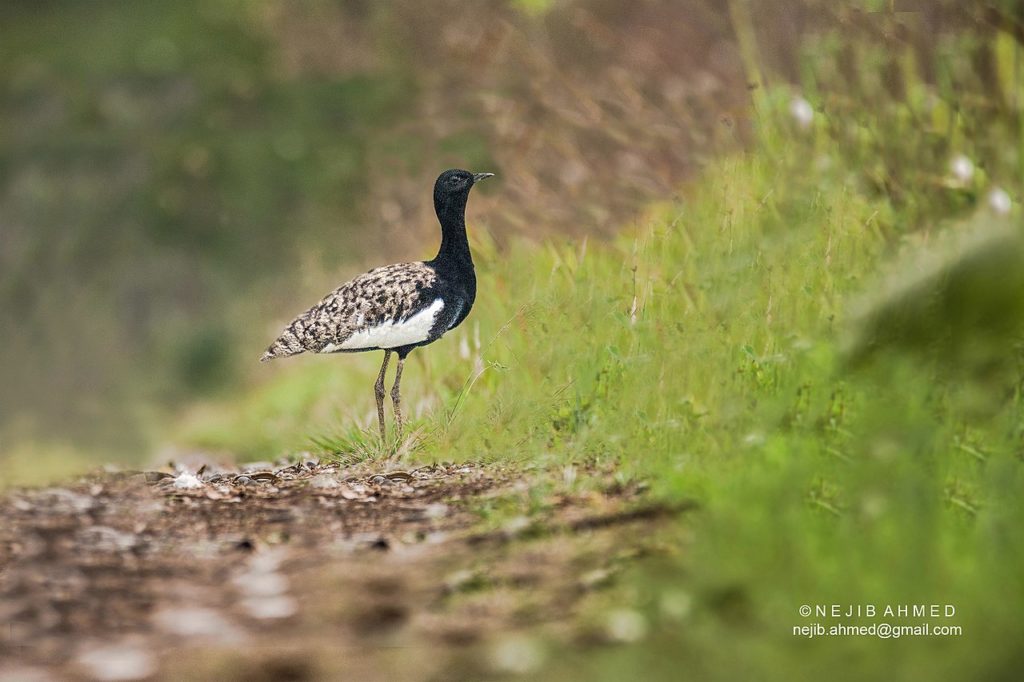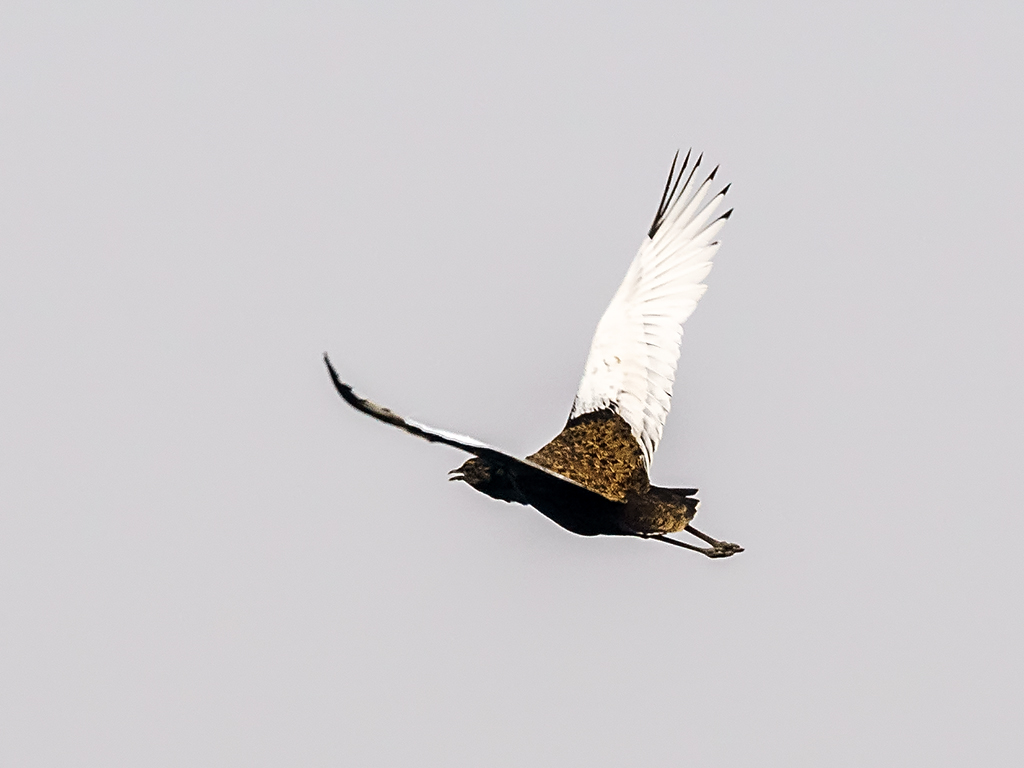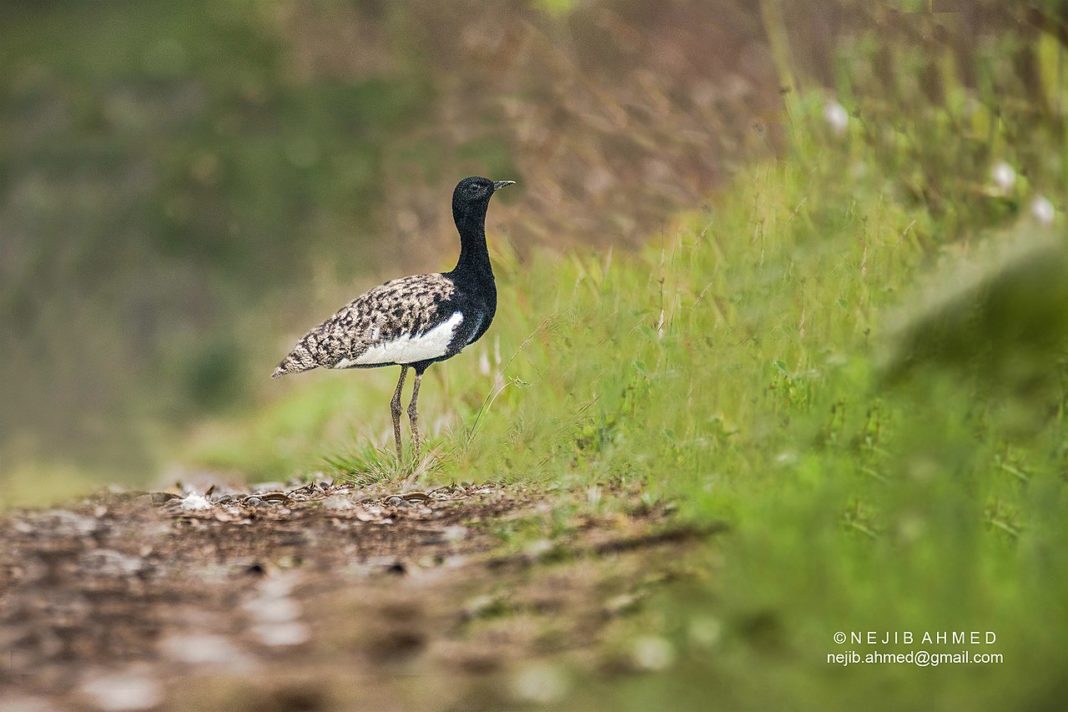The male Bengal florican has a black plumage from the head and neck to underparts. Its head carries a long lanky crest, and the neck has elongated display plumes. The upperside is buff with fine black vermiculations and black arrowhead markings, and there is a conspicuous large white patch from the wing coverts to the remiges. In flight, the male’s wings appear entirely white except for the dark primary remiges. The feet and legs are yellow, the bill and irides are dark.

The female is buff-brown similar to the males’ back with a dark brown crown and narrow dark streaks down the side of the neck. Her wing coverts are lighter than the remiges and covered in fine dark barring. Immature Bengal floricans look like a female. Adult Bengal floricans range from 66–68 cm (26–27 in) in length and stand around 55 cm (22 in) tall. The female is larger than the male and weighs around 1.7–1.9 kg (3.7–4.2 lb) against a weight of 1.2–1.5 kg (2.6–3.3 lb) in males.
 In Indochina, this bird lives mainly near the Tonlé Sap lake and central and southern Vietnam. Bengal floricans live in open tall grassland habitats with scattered bushes. The birds are usually encountered in the early mornings and evenings and are most easily spotted in the breeding season from March to August, which is when most censuses of the population are conducted.
In Indochina, this bird lives mainly near the Tonlé Sap lake and central and southern Vietnam. Bengal floricans live in open tall grassland habitats with scattered bushes. The birds are usually encountered in the early mornings and evenings and are most easily spotted in the breeding season from March to August, which is when most censuses of the population are conducted.
Due to habitat loss and overhunting, it is listed as Critically Endangered on the IUCN Red List because fewer than 1,000 individuals were estimated to be alive as of 2017. It is the only member of the genus Houbaropsis.
According to Wikipedia












